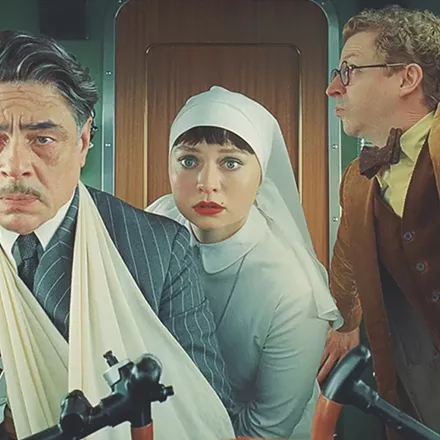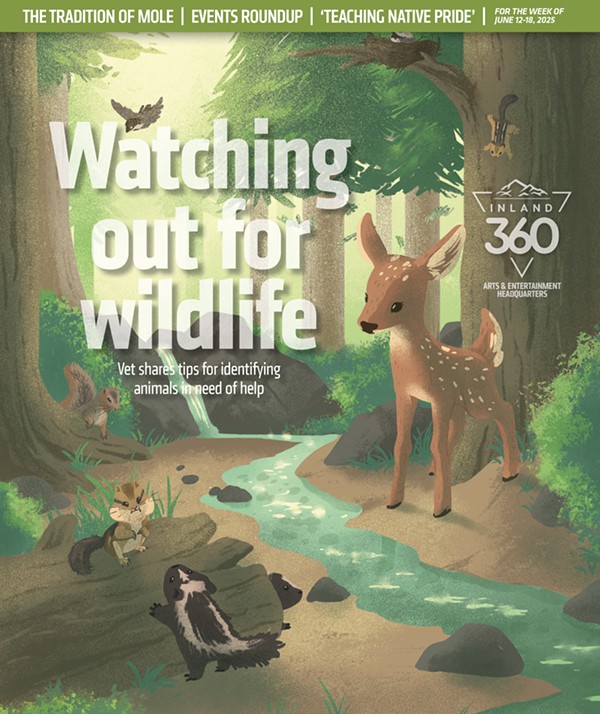By Scott Tobias Special to the Washington Post
Since the second half of 1983, when “Cujo,” “The Dead Zone” and “Christine” rolled into theaters, one after another, it’s been unofficial Hollywood writ that no Stephen King novel, novella or short story shall go unadapted for film or television. And it’s been King’s habit to keep turning out work at an astonishing clip, as though he himself were the medium through which some malevolent, supernatural voice flowed.
To say there have been countless films and TV movies associated with King isn’t merely an expression but a genuine conundrum: Do the seven sequels to “Children of the Corn” count, or just the one based on his short story? How about “The Lawnmower Man,” which bears so little resemblance to King’s story — both have lawnmower men, and that’s it — that he successfully sued to have his name removed from the title? And what of his original screenplays?
When “It,” the first in a planned two-part adaptation of his 1986 magnum opus, arrives in theaters Friday, it will be one of six King films or TV series to be released in 2017. (And that’s not counting another “Children of the Corn” movie!) “The Mist” and “Mr. Mercedes” have already premiered on Spike and the Audience network, respectively, and “The Dark Tower” swept through theaters only a month ago. “Gerald’s Game” and “1922” are both feature films premiering on Netflix in the fall. The King brand has always been licensed liberally - the man behind “Maximum Overdrive,” a lark with a killer vending machine, can’t be too precious about his work — but it’s never lost its commercial cachet, even in fallow stretches.
Coming up with a grand unifying theory on what separates the great Stephen King adaptations from the flotsam and jetsam that have washed onto shore the past three-plus decades isn’t easy. There’s no single formula for success: “The Shining” and “The Mist” have been adapted multiple times at widely varied lengths for both film and television. Last year’s solid Hulu series “11.22.63” allowed King’s sprawling alternative history to stretch out over an eight-episode limited series, while “The Dark Tower,” a tortured first go at King’s “The Gunslinger” books, barely cracked the 90-minute mark. Some have stuck to the page, letter by letter, and others have only a casual relationship to the text — neither approach is a guaranteed winner.
But there are some connections to be made among the strongest King adaptations. The first is counterintuitive: King characters are best understood from the inside out. That goes against conventional wisdom, because the most adaptable books tend to be short on interior monologue and long on external action, which is why a sledgehammer narrative such as James M. Cain’s “The Postman Always Rings Twice” has been adapted multiple times in English, in Italian (“Obsessione”), in German (“Jerichow”) and in Chinese (“Ju Dou”), and the novel’s murderous love triangle has been resonant every single time. Finding some visual analog for a character’s thoughts is a trickier proposition.
Yet the true horror of films such as “Carrie,” “The Shining,” “The Dead Zone” and “Christine” has to do with transformation, of ordinary stresses escalating into supernatural possession. In Brian De Palma’s hands, “Carrie” turns a teenage girl’s coming of age into a tale of profound isolation and sexual repression, with her desire for womanhood thwarted by her cackling peers on one side and the shame of her fanatically religious mother on the other. Even when her extrasensory powers torch the high school and beyond on prom night, it’s as heartbreaking as it is horrific, a manifestation of pain she can no longer manage. In Stanley Kubrick’s “The Shining” and John Carpenter’s “Christine,” there’s a chicken-and-the-egg quality to the relationship between the lead character and the sinister object of their obsession. Perhaps the Overlook Hotel or that snarling 1958 Plymouth Fury would wreak havoc without them, but human weakness and temptation are animating forces in both films, to the point where a symbiosis develops between those forces. We might fear the goings-on in Room 237 or the animal roar of a sentient muscle car, but the source of each fear is so deeply connected to one man’s ravaged psyche, we can’t get a distance from it. David Cronenberg’s “The Dead Zone” makes a curse out of a gift, martyring a man who can see the future at the price of his life.
The other common thread is filmmakers who refuse to act as stenographers and invent or embellish beyond the page. Despite all the misbegotten adaptations of his works, King is most famous for detesting what Kubrick did with “The Shining,” a film many would rank among the scariest of all time. But at the center of that animus is King’s perception of creative disrespect: He wrote a deeply personal horror novel about alcoholism and authorship, only to have Kubrick strip it for parts with the ruthlessness of a chop-shop mechanic. Yet it was Kubrick’s prerogative as an artist to reimagine the novel and make the film a separate entity.
Although other filmmakers haven’t been as dismissive of the source material, they’ve benefited from their own invention. Frank Darabont had to expand on novellas to turn “The Shawshank Redemption” and “The Mist” into full-bodied features, but the former now trades places with “The Godfather” as the top user-rated movie on IMDb, and the latter concocts an ending of astonishing darkness. A little creativity was also necessary to turn King’s novella “The Body” into “Stand By Me,” but director Rob Reiner honors the nostalgia and ache at the heart of King’s coming-of-age story, even as it was impossible to write to the letter. When Reiner later took on King’s “Misery,” about an author held captive by his biggest fan, he favored psychological violence over the physical brutality of the novel, but he makes one thwack to the ankles count.
As for “It,” King’s novel concerns a supernatural being that terrorizes seven children, often in the form of a clown. It also evokes a community in two distinct time periods, the late ’50s and the mid-’80s, and the psychological burdens that carry over from childhood to middle age. The promotion of “It” has gone heavy on the clown imagery; there are even “clown-only” screenings scheduled for Alamo Drafthouse theaters in various cities across the country. But if the pattern holds, and a great screen adaptation is to be made out of “It,” scary clowns alone won’t do the trick.























